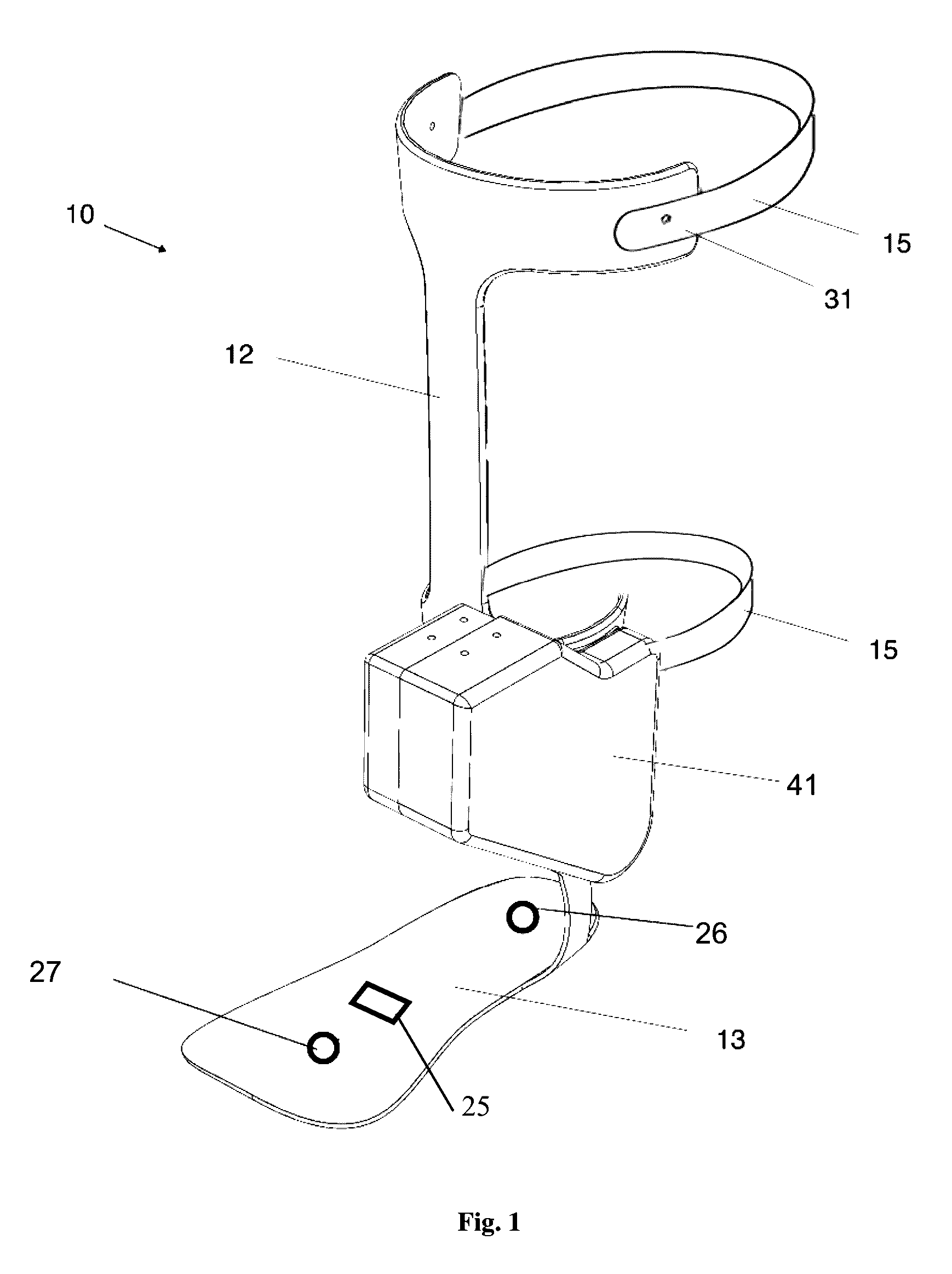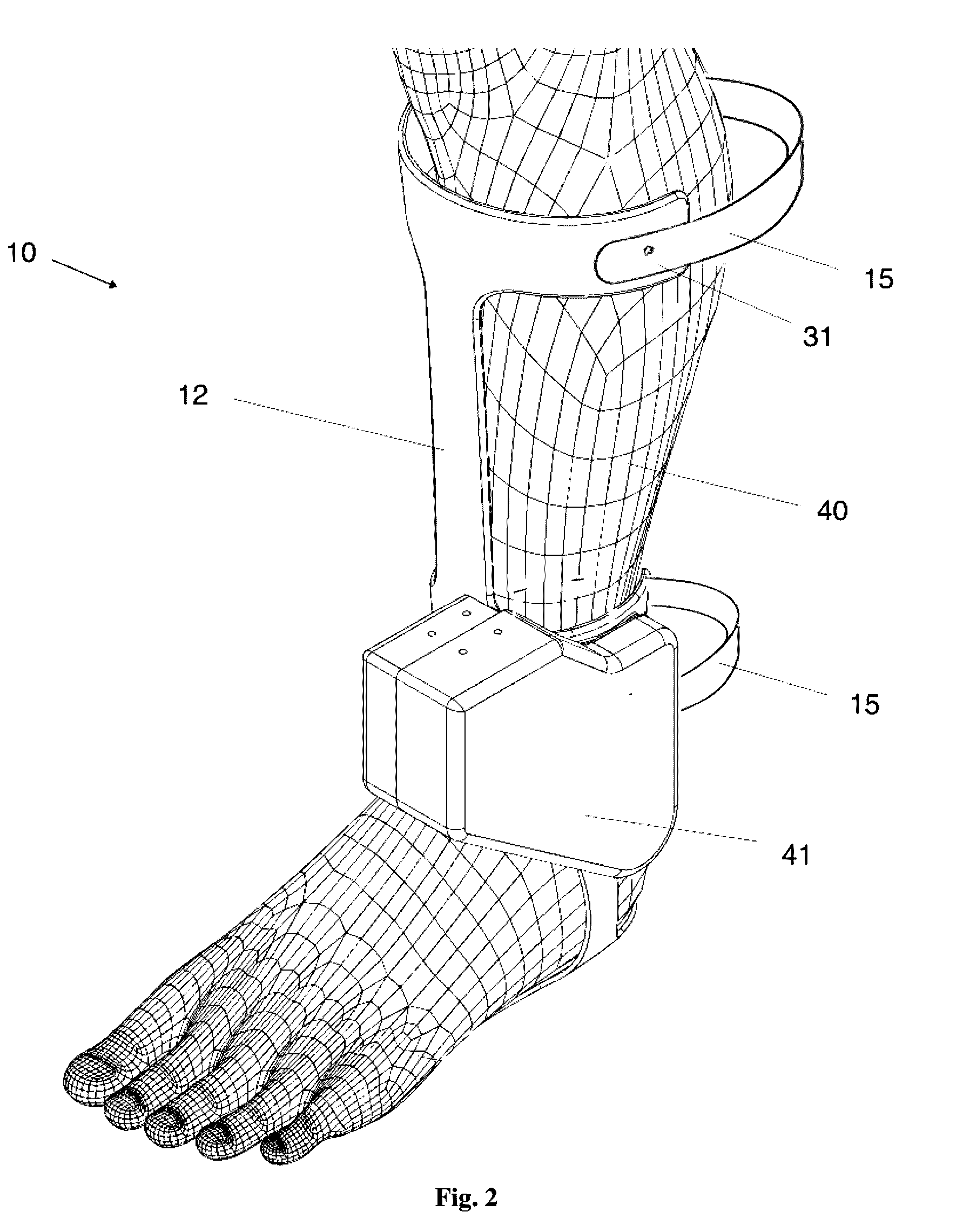Exoskeleton Ankle Robot
a technology of exoskeleton and robot, which is applied in the field of portable electrical motor-driven exoskeleton ankle joint robot, can solve the problems of significantly altering the gait pattern, significantly reducing the mobility and functional independence and impairing the functionality of the lower limb
- Summary
- Abstract
- Description
- Claims
- Application Information
AI Technical Summary
Benefits of technology
Problems solved by technology
Method used
Image
Examples
Embodiment Construction
[0047]In the following description, an exoskeleton ankle robotic device, and the corresponding embodiments are set forth as preferred examples. It will be apparent to those skilled in the art that modifications, including additions and / or substitutions, may be made without departing from the scope and spirit of the invention. Specific details may be omitted so as not to obscure the invention; however, the disclosure is written to enable one skilled in the art to practice the teachings herein without undue experimentation.
[0048]This invention is a compact and portable exoskeleton ankle robot with a control algorithm that can provide gait assistance to the user in different walking conditions. It is an ankle robot comprises a leg brace and a foot piece that pivotally coupled to the leg brace at or proximate to an ankle position. The ankle robot is preferably applying on the affected side of the user. The articulated ankle joint is coupled to an actuator through a gear transmission sys...
PUM
 Login to View More
Login to View More Abstract
Description
Claims
Application Information
 Login to View More
Login to View More - R&D
- Intellectual Property
- Life Sciences
- Materials
- Tech Scout
- Unparalleled Data Quality
- Higher Quality Content
- 60% Fewer Hallucinations
Browse by: Latest US Patents, China's latest patents, Technical Efficacy Thesaurus, Application Domain, Technology Topic, Popular Technical Reports.
© 2025 PatSnap. All rights reserved.Legal|Privacy policy|Modern Slavery Act Transparency Statement|Sitemap|About US| Contact US: help@patsnap.com



